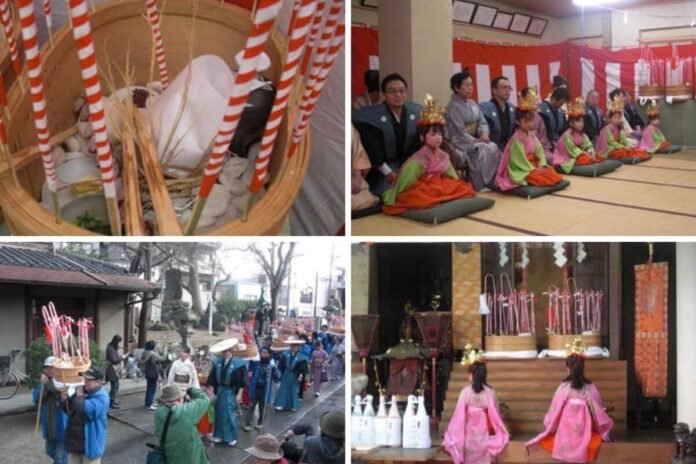
Table of Contents
What is the Ichiya Kanjo Festival?
The Ichiya Kanjo Festival, or the “one night festival”, is an annual festival held on the 20th of February. Various rituals and performances take place to console the spirits of the girls who saved the village from the disaster of the Nakatsugawa River. Although it may seem quite dark and sad, people celebrate the festival as a bright and gorgeous story of the brave girls that saved the village. The festival is an Intangible Folk Cultural Asset of Osaka prefecture that takes place at the Nozato Sumiyoshi Shrine.
History of the Ichiya Kanjo Festival
How to Enjoy the Ichiya Kanjo Festival
On the night of the 19th, a lady waits and prepares at the precincts of the shrine. A meal dedicated (Shinsen) to God is cooked on the 19th is also made in preparation. Live carp, crucian carp, and catfish, along with rice cakes, steamed rice, tofu, radish, and azuki beans, and placed in seven nagoshi tubs (Sizemores for the girls and 1 for the samurai).
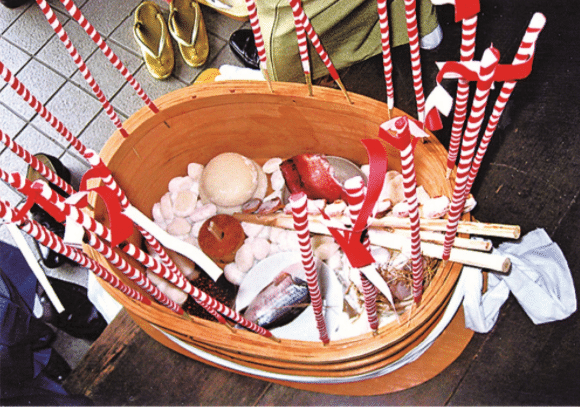
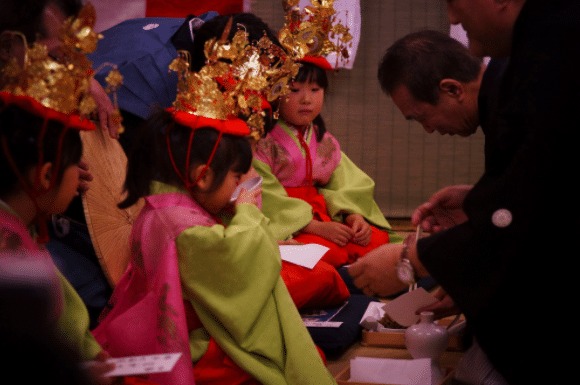
On the day of the 20th, a private procession called Toya (This is not available to see by the public). It is usually held at facilities in the ward such as Himesato Kaikan Elderly Rest House and Utajima Community Kaikan but the location changes depending on the year. Seven small girls and their mothers and fathers volunteers attend this ceremony. The priest hands a prayer scroll to each group containing a prayer. Next, he hands over a “farewell cup” of amazake and simmered burdock root. Finally, the priests hands a Tamagushi to each of the girls. (A tamagushi form of shinto offering made from a sakaki-tree branch decorated with shide strips of washi paper, silk, or cotton).
Parade
From this point, the viewable festival promptly starts at 2pm with a traditional ceremonial washing and then a procession of priests and participants leaving the temple grounds. Six small girls and their mothers parade around the surrounding streets with music and bells rattling along as they walk. Along with them are a group of priests, music players, and shrine maidens. They carry seven round tubs, filled with the Shinsen made the night before. Alongside this, the samurai’s father wears a wakizashi on the kamishimo, and the mother attends in a kimono. They walk solemnly, almost funeral like, in honour of the sacrificed girls from the past, and make their way to the Nozato Sumiyoshi Shrine.
At the shrine, the priest places the shinsen at the altar and the priests collect the tamagushi from the girls. The six girls sit on small cushions and pray to God at the altar. After, a small dance takes place by two maidens and the ritual finishes. At the back of the shrine, there is a small pond called the “dragon pond”, where the sacrificed girls lie in memorium. People compare the rampaging Nakatsugawa river to a large dragon, hence the name. A small shrine is next to the pond in commemoration of the folk tale.
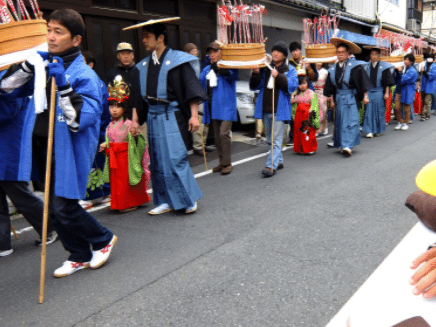
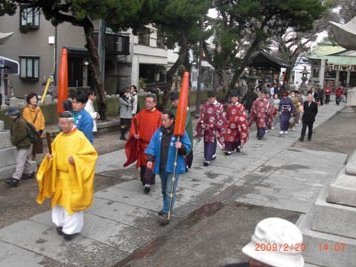
Nozato Sumiyoshi Shrine
In 1382, Yoshimitsu Ashikaga built the Shrine. Nozato is an old village that opened along the right bank of the former Nakatsu River (currently Nishiyodogawa) during the excavation of the Shinyodogawa River at the end of the Meiji era. People know it for having a Shinto ritual (an intangible cultural property of the prefecture). The shrine beacme a pivotal part of the village for people to go pray.
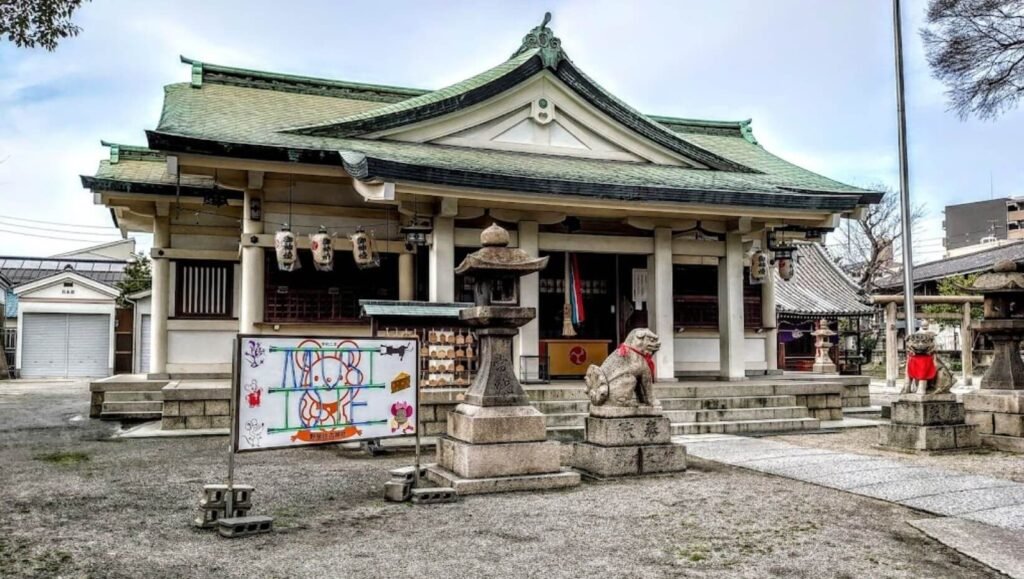
Access
Web: www.osaka-jinjacho.jp
Tel: 06-6471-0277
Address: 1-15-12 Nozato, Nishiyodogawa-ku, Osaka 555-0024
Watch a video on the Ichiya Kanjo Festival here:
The origins of Ichiya Kanjo Festival is still 100% unknown but the mystery and darkness add a depth of intrigue. If you are looking for a small and traditional festival, then this is the one for you.

























